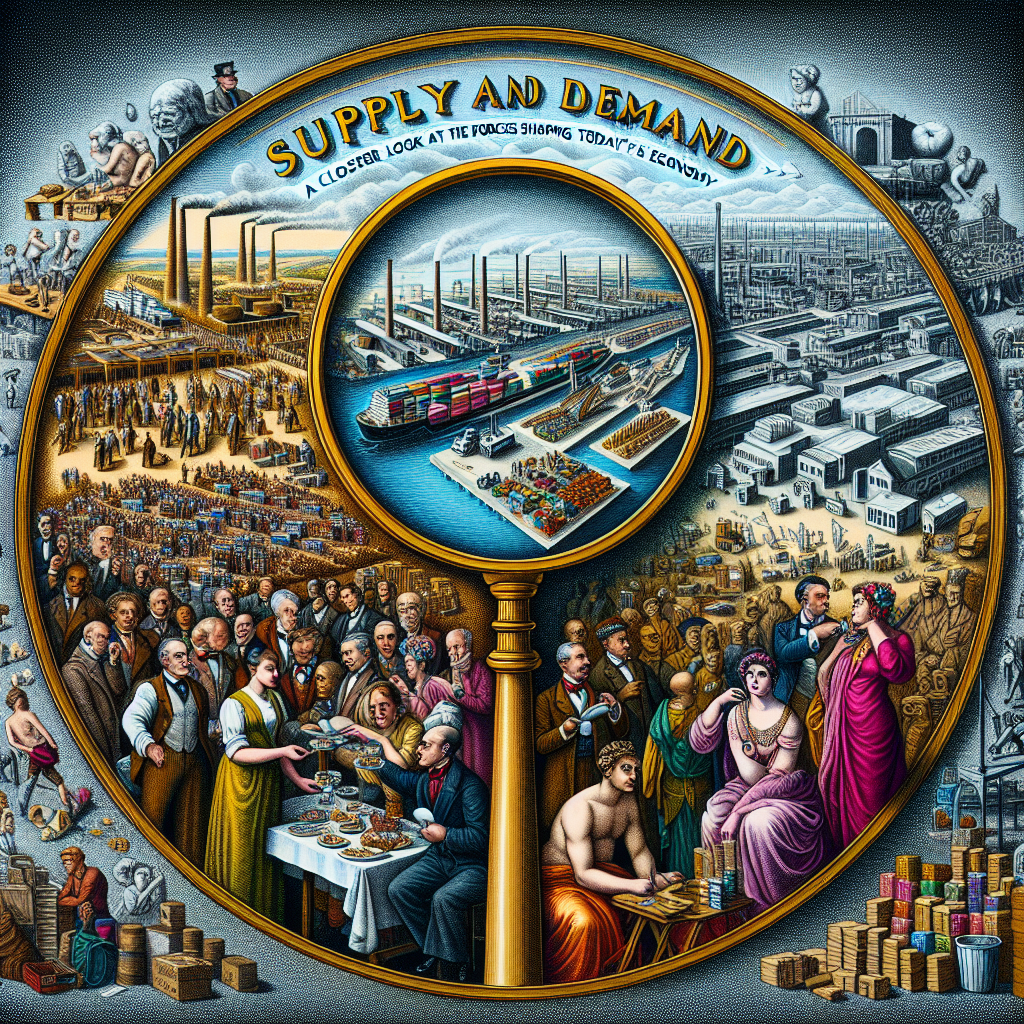Introduction
The concept of supply and demand is a fundamental principle in economics that explains how markets operate. At its core, supply refers to the quantity of a good or service that producers are willing to sell at various prices, while demand indicates how much of a good or service consumers are willing to purchase at those prices. Understanding these two forces is essential for grasping how the economy functions, setting prices, and determining how changes in the market can impact overall economic health.
Understanding Supply
Supply represents the relationship between the quantity of a good that producers are willing to offer and the price. Generally, there is a direct relationship: as prices rise, the quantity supplied increases, and vice versa. This phenomenon is illustrated in the upward-sloping supply curve, which reflects the willingness of producers to supply more goods when they can sell them at higher prices.
Factors affecting supply include:
- Production Costs: If the cost of raw materials or labor increases, the supply of goods decreases.
- Technology: Advances in technology can make production more efficient, leading to an increase in supply.
- Number of Suppliers: When more companies enter the market, the overall supply of goods will increase.
- Government Policies: Regulations and taxes can impact production costs and influence supply.
Decoding Demand
Demand reflects the relationship between the price of a good and the quantity that consumers are willing to buy. Unlike supply, demand generally has an inverse relationship with price: as prices decrease, demand increases. This is captured in the downward-sloping demand curve. For example, if the price of a laptop decreases, more consumers are likely to purchase it.
Several factors influence demand, including:
- Consumer Income: Higher income levels often lead to increased demand for goods and services.
- Consumer Preferences: Trends and changes in consumer tastes can significantly affect demand.
- Price of Related Goods: The demand for one product can be influenced by the price changes of complementary or substitute goods.
- Future Expectations: Consumers’ expectations regarding future prices and availability can alter their current buying behavior.
Market Equilibrium
The intersection of the supply and demand curves on a graph represents the market equilibrium, where the quantity supplied equals the quantity demanded at a certain price. This point indicates a stable market condition, as there is neither a surplus nor a shortage of goods. When supply or demand shifts, equilibrium price and quantity will also change.
For instance, if demand increases due to a rise in consumer income, the demand curve shifts to the right. This shift leads to a new equilibrium price that is higher, as suppliers respond to increased demand by raising prices. Conversely, if a new technology reduces production costs, suppliers may increase production, shifting the supply curve to the right and resulting in a lower equilibrium price.
Current Economic Trends Influenced by Supply and Demand
The forces of supply and demand are constantly at work in today’s economy, shaping various markets in distinct ways. Some notable current trends include:
1. Real Estate Market
In many urban areas, real estate prices have skyrocketed due to increased demand driven by low-interest rates and a population shift toward cities. However, supply has struggled to keep up due to zoning laws and rising construction costs, leading to significant price hikes in housing.
2. Labor Market
The labor market has experienced fluctuations in demand and supply, particularly in the wake of the COVID-19 pandemic. As many sectors faced labor shortages due to health concerns and changing employee expectations, wages have increased as companies compete for talent.
3. Consumer Goods
For consumer electronics, the demand surged during quarantine periods, causing supply chain disruptions. As a result, prices have risen in response to shortages, showcasing the delicate balance of supply and demand in action.
The Role of Government in Supply and Demand
Governments play a crucial role in influencing supply and demand through various policies. Tracking and adjusting economic policies can lead to stability in markets. Key strategies include:
- Monetary Policy: By altering interest rates, central banks can influence consumer spending and business investment, which affects demand.
- Fiscal Policy: Government spending and taxation can directly impact the overall economy, influencing both supply and demand.
- Regulation: Establishing laws and regulations can either encourage or discourage production, affecting supply levels.
Conclusion
Understanding supply and demand is vital for navigating today’s complex economic landscape. These twin forces dictate market behavior, affect pricing, and ultimately shape economic policy. With ongoing changes in consumer preferences, technology, and global events, the dynamics of supply and demand will continue to evolve, presenting both challenges and opportunities for businesses, consumers, and policymakers alike.
Frequently Asked Questions (FAQs)
What is supply and demand?
Supply and demand are economic principles that describe the relationship between the quantity of a good available in the market (supply) and the desire of consumers to purchase that good (demand).
How do supply and demand affect prices?
Prices are determined by the interaction of supply and demand. If demand exceeds supply, prices tend to rise. Conversely, if supply exceeds demand, prices typically fall.
What is market equilibrium?
Market equilibrium is the point where the supply of a good matches demand, resulting in a stable price. It is depicted graphically at the intersection of the supply and demand curves.
How does government policy influence supply and demand?
Government policies can affect supply and demand through taxation, subsidies, regulation, and monetary policy, thereby impacting market conditions and pricing strategies.
Why is understanding supply and demand important?
Understanding these concepts is crucial for making informed business decisions, evaluating market conditions, and anticipating economic changes that can influence both consumers and producers.
Tip
Regularly monitor market trends and economic indicators to better predict shifts in supply and demand. This proactive approach will help you stay informed and adapt quickly to changing market conditions.
#Supply #Demand #Closer #Forces #Shaping #Todays #Economy
